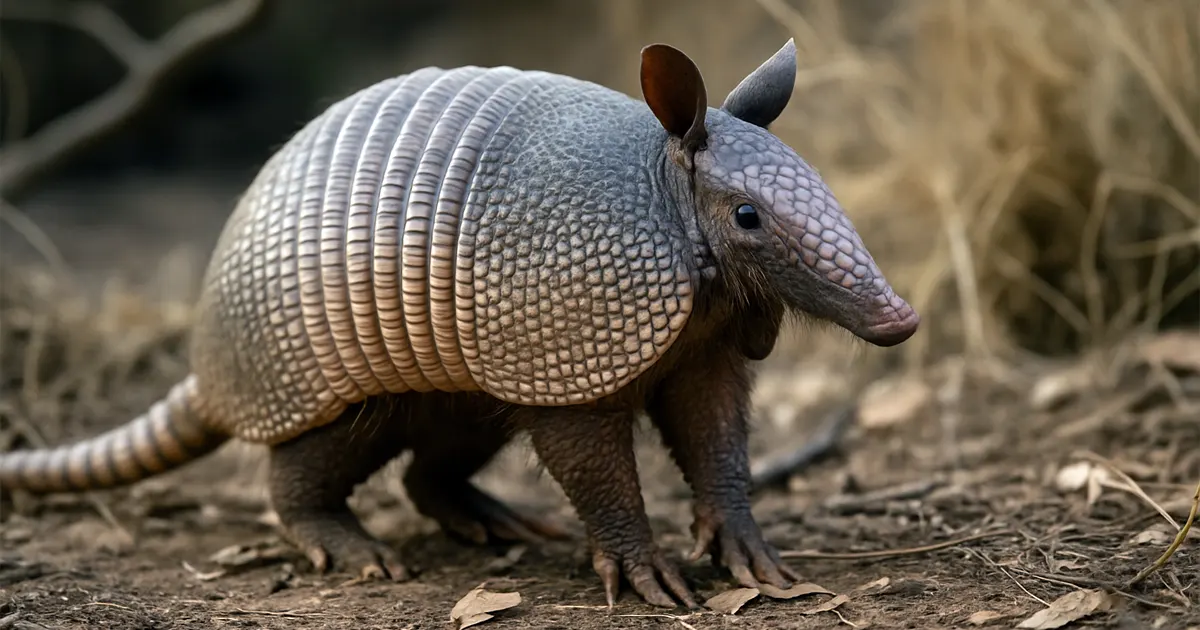Have you ever seen an armadillo? The word is actually Spanish for “little armored one”. They vary in size and have long pig-like snouts, short legs, a long tail, sharp claws and big ears. While many armadillos are plain gray or brown in appearance, some also have pink, red or even yellow coloring. The smallest is a pink fairy armadillo, which is only five inches long. The biggest is a giant armadillo, which can be 59 inches long, weigh 120 pounds, and have up to 100 teeth along with six-inch claws.
What makes them odd looking is their cape of hard shells or armor. They’re the only animals in the world that have their back, head, legs, and tail covered in hard shells that look like armor or shields that overlap each other in order to protect them against their enemies or dangerous animals. They also have a sticky tongue. This makes it easier for them to catch their favorite food – bugs – from small tunnels that are too hard to reach with their claws.
There are 20 different types of armadillos. Here are more facts about these unusual creatures.
1.) Nearly blind and deaf:
Armadillos are nearly blind and deaf and rely on their keen sense of smell to monitor their environment. Some scientists say their sense of smell is so strong that they can find food up to 9-inches underground.
2.) Nine-banded variety:
The type that lives in the United States is called the nine-banded armadillo.
3.) Underwater walkers:
They’re actually good swimmers. They can hold their breath for up to six minutes and are really skilled at walking underwater to cross streams.
4.) Surprising jumpers:
When startled or scared, these armadillos can jump four to five feet high. This typically surprises any creature trying to eat it for lunch. Unfortunately, this doesn’t work so well when they’re crossing a road and startled by a moving car, which is why they are common roadkill.
5.) Tropical habitats:
Most of the 20 species of armadillos mainly live in or near the tropical (hot) parts of Central and South America. Most live in open spaces, but some live in forests.
6.) Related to sloths:
Their relatives are sloths and anteaters.
7.) Cold-blooded mammals:
Unlike people who are warm-blooded, armadillos are cold-blooded. But they’re not reptiles. Their body doesn’t generate heat internally, which means they’re not good at staying warm when it’s cold outside. When the weather is cold, they may group together in burrows that have a nest of leaves or grass inside.
8.) Baby armadillos:
Armadillos are mammals and can give birth to anywhere from 1 to 12 pups in a litter. When born, their shell is soft and gray and feels like leather. They can roll up into a ball within hours of being born and live anywhere from 4 to 40 years!
9.) Lone travelers:
The majority of armadillos like to be alone and are solitary most of the time. They travel to look for food and try to avoid danger. Nine-banded armadillos rarely travel more than half a mile from where they were born. They rarely socialize outside of the breeding season.
If you could be any animal just for a day, would you be an armadillo? Email what you like best about this animal along with your first name, age, and state you live in and we’ll post your response on our social media pages!



